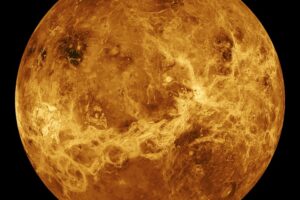Discovered in 1846 by astronomers Johann Galle and Heinrich d’Arrest, Neptune is located over 4.5 billion kilometers from the sun, making it one of the most distant planets in our solar system. Despite its distance, Neptune is a fascinating world that has been the subject of numerous scientific studies and exploration missions.
One of the most striking features of Neptune is its dynamic weather patterns, including massive storms and turbulent winds that can reach speeds of up to 2,100 kilometers per hour. The most famous storm on Neptune is the Great Dark Spot, a massive storm system similar to Jupiter’s Great Red Spot but much larger in size.
In addition to its turbulent weather, Neptune also has a unique magnetic field that is tilted at a 47-degree angle to its axis of rotation. This unusual magnetic field is believed to be generated by a complex system of internal processes, including a metallic hydrogen core and a layer of icy materials.
Despite its distance from Earth, scientists have been able to learn a great deal about Neptune through a combination of ground-based observations and space missions. The Voyager 2 spacecraft, launched by NASA in 1977, made a close flyby of Neptune in 1989 and provided valuable data and images of the planet.
In recent years, astronomers have continued to study Neptune using advanced telescopes and spacecraft, such as the Hubble Space Telescope and the Kepler Space Observatory. These observations have revealed new insights into the planet’s atmosphere, weather patterns, and moons.
Neptune also has a fascinating system of moons, including Triton, the largest and most well-known moon of the planet. Triton is believed to be a captured Kuiper Belt object, making it an important target for scientific study and exploration.
As our understanding of Neptune continues to grow, scientists are eager to uncover more secrets about this distant and enigmatic world. Future missions to Neptune, such as the proposed Trident mission by NASA, could provide new insights into the planet’s composition, atmosphere, and magnetic field.
In conclusion, Neptune is a fascinating and mysterious world that continues to intrigue scientists and astronomers with its dynamic weather patterns, unique magnetic field, and complex system of moons. As our knowledge of Neptune expands, we can look forward to uncovering more secrets about this icy giant at the edge of the solar system.






























Add Comment